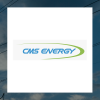Some easy domestic renewable energy options for your home include geothermal heat pumps, wind turbines, and passive solar.
It may look like a limited playground slide, but a solar water heaters can be an efficient way to use the sun's power to heat the water coming into your home. According to the U.S. Department of Energy, they do this using storage tanks and solar collectors, and generally come as an active system, which use pumps to circulate the water, and passive systems, which use gravity and natural convection to transfer the hot water into the house.
Active versions tend to be slightly more efficient than passive versions, and within this class, there are two options available. Direct circulation setups are ideal for climates where it rarely freezes, and use pumps to transfer the water, while the indirect circulation systems work well in climates that experience freezing temperatures, and use a non-freezing, heat-transfer fluid with a heat exchanger to do the same.
Passive solar water heaters can be less expensive and less efficient, but because of their less-complicated mechanisms, they can sometimes offer more durability. There are two types of passive solar water heaters: the integral collector-storage passive systems, which simply allows the sun to heat the water, at which point it flows into the household, and the thermosyphon systems, in which water is collected up on the roof and flows downward into the house when a faucet is turned.










